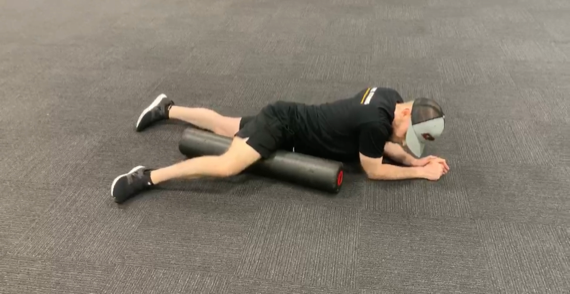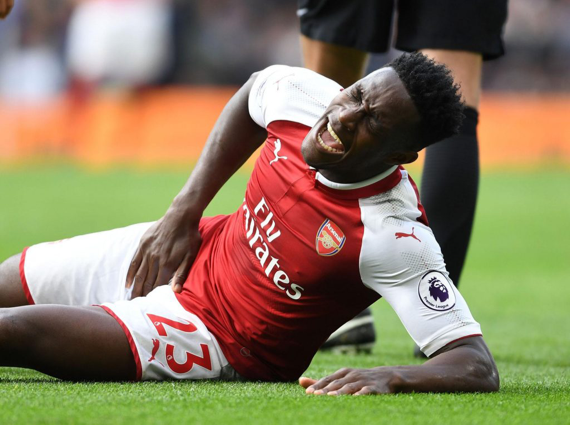Sports-Related Groin Pain Rehabilitation Part 1
by Jared Packer, DPT, CSCS
Sports-related groin and lower abdominal pain can be a frustrating and perplexing problem. It has been dubbed by some as the “Bermuda Triangle” of musculoskeletal injuries. The complexity arises from the wide range of structures that can contribute to this issue.
The muscles of the inner groin and the lower abdomen attach closely to each other, and work together to stabilize the pelvis. For this reason, groin injuries usually involve a dysfunctional relationship between these structures, not just a problem in the area that hurts.
Thankfully, our understanding of how to diagnose and manage these injuries has improved in the last few years. After reading this blog, you will have a better understanding of the steps that you can take to recover from sports-related groin pain. In part 1 we will cover risk factors, classification of injury, and early-stage rehab.
Make Sure It’s a Groin Strain
First, it is important to identify the source of the pain. There are a number of medical conditions that can refer to pain to the groin, such as an inguinal hernia or testicular cancer. In addition, hip, low back, and nerve injuries can refer pain to the groin. Consulting with a medical professional such as Dr. Michael Reinhorn of Boston Hernia can help you to rule out any serious medical conditions.
If your pain is in fact due to a sports-related groin injury, the next step is to address the contributing factors.
Risk Factors
Determining the risk factors of a groin injury guides our treatment. Some are not within our control, such as:
-
Shape of pelvis
-
Sport of choice (high prevalence in soccer and hockey)
-
Previous Injury
There are other root causes that we can control. These are:
-
Overuse
-
Suboptimal mechanics
-
Stress
Stress has a massive impact on any injury and must be considered. Because it is such an in-depth topic, it will not be covered here. For those interested in learning more, here is an introduction to understanding the balance between stress and recovery.
Overuse
Overuse, or repetitive strain, can occur both in the short term (acute) or the long term (chronic).
Acute overuse happens when the strain on your body exceeds what it can handle in a short period of time. Did you start a CrossFit program 4 times a week or an advanced running program after a year of no activity? These behaviors significantly increase the risk of injury.
Chronic overuse happens when the strain on your body exceeds what it can handle over a long period of time. Does your rigorous sports schedule leave little time for recovery? Do you play one sport year-round at a young age? This strains the same areas of the body over and over again when the body thrives on variety to distribute stress.
This highlights the importance of gradually increasing your tolerance to physical activity, and listening to your body for feedback.
Suboptimal Mechanics
When engineers design machinery, they consider mechanical advantage. They position the parts of a machine to work as efficiently as possible. Think of how much easier it is to lift a vehicle with a car jack.
The principles of mechanical advantage also apply to the human body.
Muscles attach to bones, and operate best when these bones are aligned a certain way.
Groups of muscles pull against each other to stabilize the body. In the case of the pelvis, the lower abdominal and groin muscles have this type of relationship.
If certain muscles are at a disadvantage because they are not positioned well, they will have to work a lot harder to do their job. For example, if the pelvis is stuck in an excessive relative anterior pelvic tilt, the abdominals and hamstrings may be stretched and in a poor position to work efficiently. If this is the case, it is likely these muscles will fatigue at a faster rate.
Sometimes, our pelvis is shifted towards one side of their body. This leads to one set of groin muscles working more than the other side.
To make matters worse, as these muscles fatigue, your brain will call on other muscles to help out. This will leave these additional muscles unavailable to perform other tasks. Overall this creates stability but sacrifices freedom of movement due to stiffness.
Ultimately, this can result in decreased adductor strength and hip range of motion, both of which are risk factors in developing an adductor-related groin injury.
If muscles are overworking because they are out of position, the total strain on them is greater. If poor mechanics and overuse are both present, the risk of injury becomes much higher.
Classification of Sports-Related Groin Injuries
A physical therapist will perform a series of tests to rule out any contributions from the lumbar spine, hip, and/or nerve-related injuries.
They will then assess your hip/abdominal strength and range of motion in order to classify the injury. Different tests will correspond to different muscles, and help to determine the focus of your rehabilitation.
According to the Doha agreement, sports-related groin injuries can be classified in 4 ways:
-
Adductor-related groin pain
-
Iliopsoas-related groin pain
-
Inguinal-related groin pain
-
Pubic-related groin pain

(Weir et al 2015, Doha agreement meeting on terminology and definitions in groin pain in athletes. https://bjsm.bmj.com/content/49/12/768)
Usually, individuals fall into a single category, and adductor-related groin pain is the most common. It is not uncommon however for someone to have symptoms belonging to more than one of these areas.
Your PT will also test functional movements related to your activity/sport of choice in order to track progress. These may include single-leg balance, squats, and jumping, depending on the severity of the injury.
Treatment of Sports-Related Groin Injuries
Treatment should focus on the following:
-
Managing pain
-
Improve tissue tolerance
-
Improve mechanics
-
Functional/Sport Specific training
Managing Pain
Isometrics are often effective at decreasing pain. The following are parameters you can follow for performing isometric exercises.
-
Imagine you are turning up a dial that controls the intensity, starting your contraction at 0% and then to 10%, 20%, and so on. Max 70% intensity.
-
Increase the intensity until you get to the point of MINIMAL symptoms, or the sense that you are at the limit of what is safe. A physical therapist can help you determine what level of intensity would be best for your unique circumstances.
-
Hold for 20-45 seconds
-
Rest 1 minute
-
Repeat for a total of 2-5 sets
-
2-3 times a day
-
If symptoms are worsening, you are squeezing too hard and should turn down the dial a little bit.
The following are isometric exercises you can do, depending on the type of sports-related groin injury that you have. Click HERE for a PDF document.
Adductor-Related Groin Pain Isometrics

Iliopsoas-Related Groin Pain Isometrics

Inguinal-Related Groin Pain Isometrics

These circular arrows represent a posterior pelvic tilt. Two ways you can create this motion are by flattening the lower back, or by pulling your belt buckle towards your chin. The muscles that pull the pelvis in this direction are the abdominals and the hamstrings. In this particular case, we are focused on activating the abdominal muscles.
Foam Rolling
Foam rolling can decrease pain, increase blood flow, stimulate cellular healing, and decrease muscle tone. Use the following guidelines to include this in your rehabilitation. Click HERE for a PDF version.
-
Lightly roll over the muscles in the specified areas
-
Spend 20-30 seconds on each
-
If there is a particularly tender area
-
pause and maintain pressure
-
perform slow exhalations (6 seconds each)
-
wait until the tenderness subsides (max 3 minutes
-
-
Adductors

-
Quads

-
Hip Flexors
Stay tuned for part 2 where we will discuss the later stages of rehab, as well as other considerations of sports-related groin pain! For more questions on sports-related groin rehab, reach out to one of our physical therapists today. Contact us here.
This blog is not a substitute for medical advice. If you are experiencing symptoms, consult a licensed healthcare provider.
Tags:

May 19, 2021







